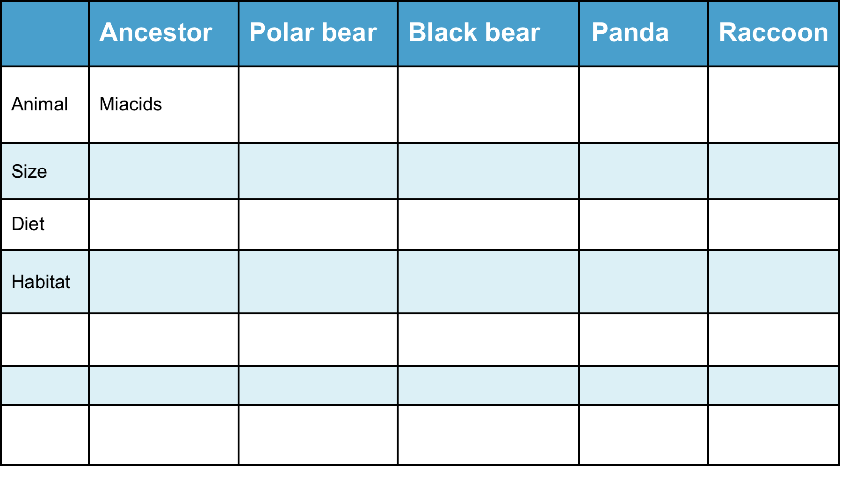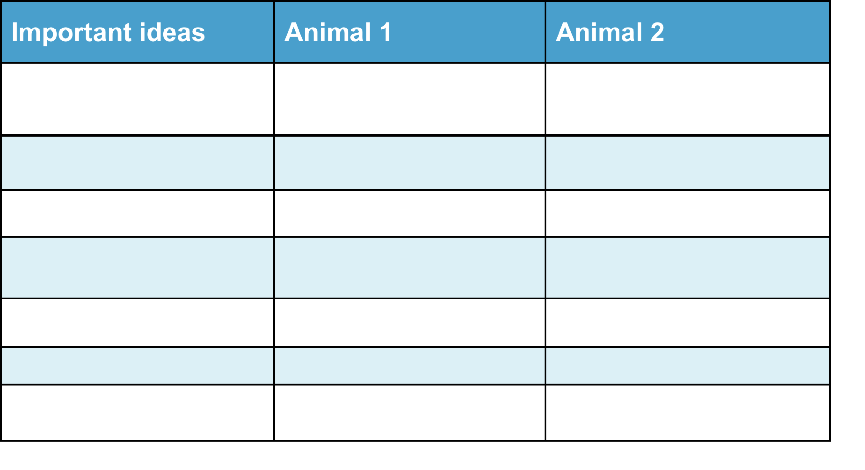Information for Teachers
Curriculum links
Australian Science Standards
BS (ACSSU72) Observations of living things as they move through their life cycles
BS (ACSSU72) Differences between living, once living and products of living things
BS (ACSSU73) Living things depend on each other and the environment
New Zealand Science Achievement Objectives
LW: The basic process by which genetic information is passed from one generation to another
NS: Scientists’ investigations are informed by current science theories and aim to collect evidence that will be interpreted through processes of logical argument
Helpful websites
You may want to direct your students to websites to help with their investigations.
Students can use words like these in doing their search:
The+evolution+of+bears
https://www.bearsinmind.org/Page/The-evolution-of-bear-species
How to search the internet
1 Keep your request short
Fewer words will give a more accurate search.
2 Choose exactly what you want
For example: Arctic Circle Climate
3 Use quotes
Double quotes around a set of words tell the search engine to consider those exact words in that exact order without any change. For example: “Arctic Circle Climate”
4 Use the plus sign (+)
If you add a plus sign (+) between words, the internet will search for all the words. For example: migrate+birds+whales+mammal
5 Use the minus sign (–) to say what you don’t want
Use a minus sign (–) to show words you do not want to appear in your results. For example: if you search for burrowing animals and do not want mammals in your search, –mammals will exclude mammals. Note that you need to put a space before the minus sign for the word to be excluded.
6 Be very clear about what you don’t want
Part 1
Ask questions and make predictions
After reading Animals and their Ancestors, you may be surprised about the amazing changes that led to a modern animal.
List your questions
- Compare your list with questions that others have.
- Choose a question you would like to investigate.
- You can work alone, with a partner, or in a small group.
You may want to choose one or more of these questions to investigate
Q1. Choose a family of animals developed from a common ancestor that come in many shapes and sizes today. For example, dogs.
Q2. Find out how farm animals have been carefully bred by farmers to meet their farming needs. For example: cows to provide more milk or meat, sheep to provide more wool or meat, and pigs to provide more meat.
Q3. Find more information about animals that look much the same as they did millions of years ago.
Go to Part 2 Plan and investigate →Part 2
Plan and investigate
Once you have decided on your question, search the internet or books, or talk to people who can help find the information you are looking for.
Your teacher may suggest suitable websites for further information.
Go to Part 3 Record and analyse data →Part 3
Record and analyse data
Find a way of recording your information that will allow you to see any patterns in the data.
Data Chart for the ancestor of modern bears
[Download and change to suit your information]
 Download Chart
Download Chart
Go to Part 4 Evaluate the information →
Part 4
Evaluate the information
1. Look over the information you have gathered and the patterns you have found.
Does any of this information surprise you?
2. Search for other patterns.
Which other animals are related to bears?
3. Make notes about what you find.
Go to Part 5 Communicate and share ideas →Part 5
Communicate and share ideas
Look over all of the information that you have gathered in your investigation.
What are the most important ideas about animal ancestry?
Make a chart showing the most important ideas.
 Download Chart
Download Chart
← Return to menu
